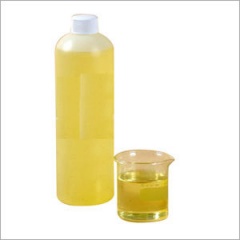Castor Oil
| Infobox on Castor Oil | |
|---|---|
| Example of Castor Oil |  |
| Facts | |
| Origin | Brazil, India, Russia, U.S. |
| Stowage factor (in m3/t) |
|
| Humidity / moisture | See text |
| Ventilation | - |
| Risk factors | See Bulk Oils and Fats |
Castor Oil
Description
Castor oil is a vegetable oil obtained from the castor bean. Castor oil is a colorless to very pale yellow liquid with mild or no odor or taste. Its boiling point is 313°C and its density is 961 kg/m3. It is a triglyceride in which approximately 90% of fatty acid chains are ricinoleic acid. Oleic and linoleic acids are the other significant components.
The castor seed contains ricin, a toxic protein. Heating during the oil extraction process denatures and inactivates the protein. However, harvesting castor beans may be not without risk. Allergenic compounds found on the plant surface can cause permanent nerve damage, making the harvest of castor beans a human health risk. India, Brazil, and China are the major crop producers, and the workers suffer harmful side effects from working with these plants. These health issues, in addition to concerns about the toxic byproduct (ricin) from castor oil production, have encouraged the quest for alternative sources for hydroxy Fatty Acids. Alternatively, some researchers are trying to genetically modify the castor plant to prevent the synthesis of ricin.
The beans are cold pressed for the first grade of medicinal oil (<1% of FFA) and hot pressed for the common qualities, approx. 40% of the oil content of the bean being obtained (<2% FFA). Residual oil in the cake is obtained by solvent extraction.
The composition of castor oil makes it unique amongst the vegetable oils. The oil has a viscosity much higher than all other vegetable oils, and this makes it more difficult to pump than other vegetable oils. It has therefore been recommended that the temperature for loading and discharge should be 30-35°C. The unusual composition of the oil is also the cause of it having a higher density than other vegetable oils, this being approximately 960 kg/m3 at 25°C.
The oil is normally traded with a maximum Acid Value of 2 mg KOH/gm, equivalent to 1% free fatty acid.
Application
Castor oil is used as a lubricant, in the production of cosmetics and a range of chemicals and also in the production of various surface coatings. These applications make it important to avoid discolouration of the oil during handling.
Shipment / Storage
Castor oil is shipped in bulk, or in drums for small quantities. Castor oil is not liable to loss in weight or to deterioration through inherent vice. Proximity to boilers, combined with a long voyage, may result in an increase in the Free Fatty Acid (FFA) content.
Drums must be free of rust and well cleaned before filling. If water is left in drums, the quality will deteriorate, and if the proportion of water is high the oil will develop a smell similar to that of dirty water which has been stored for a long time. The quality of the oil must be examined by drawing samples from all drums for analysis. Rubbing a few drops of the oil between the palms of the hands, it gives at times a characteristic smell from which it may be possible to determine whether castor oil is in the process of deterioration, or in good condition.
| Favorable travel temperature | 15°C (12 - 25°C) |
| Solidification temperature | -10 - -18°C |
| Pumping temperature | 30 - 35°C |
| Max. duration of storage | 6 months |
The quality of an oil is measured by the acid value, which however, should not be too high as this denotes an excessively high FFA content which causes the oil to turn sour.
Discoloration may also occur.
Oils and fats spoil readily by becoming rancid which is promoted by light, atmospheric oxygen and moisture and leads to changes in odor and taste.











